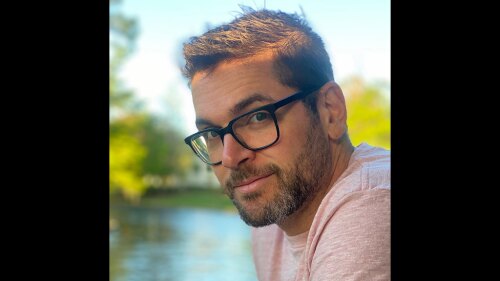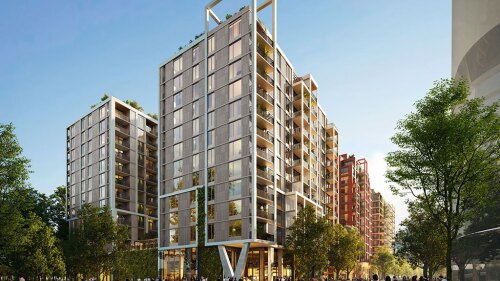The Agile City: Building Well-Being and Wealth in an Era of Climate Change
James S. Russell
Island Press
1718 Connecticut Avenue NW, Suite 300, Washington, DC 20009.
http://islandpress.org.
2011. 290 pages. $35.00, hardcover.
In his book The Agile City, James S. Russell, architecture critic for the Bloomberg news service, instills hope and inspires movement toward being better at living on this planet. Found in his book are quiet solutions to help heal the environment—the lowly shutter, for example, or living in “closer cognizance to climate, weather, daylight, and breezes.” Also presented are serious measures on a larger scale that will help people meet the climate change challenge, and prosper as well. This is a time rich with opportunities for innovation and laden with an urgency for planning, not through reactive regulation, but at broader scales—“at the scale of a watershed, forest, or other ecosystem, in ways that recognize large-scale economic relationships and regional mobility and infrastructures,” Russell writes. In short, people must rethink property rights and the definition of community.
This book is primarily about climate change, but it is also about human change. Russell’s main focus is the United States, where immense possibility exists and where cities can and must become more agile—able to “adapt at a scale and speed that is unprecedented,” he says. For U.S. housing developers, continuing to allow established, artificial mechanisms to drive building and project design—the “simplistic, obsolete, one-size-fits-all method of city-making that is neither agile nor very adaptable”—amounts to doing the same thing over and over again and expecting different results, the very definition of insanity, he asserts. In the case of the typical development model employed throughout the country, continuing current approaches simply means hastening the onslaught of more severe weather, flooding, droughts, water shortages, hotter summers, colder winters—and the list goes on.
To save itself and leave something for future generations, the current generation must adopt a new attitude, one of “agile ownership.” How people treat a parcel of land has an effect on those “natural systems that flow within and beyond our tidy land divisions,” Russell writes. American sprawl, in which cities add ring road after ring road farther and farther from city centers, is what Russell calls this county’s “dysfunctional growth machine” at its worst. Under the guise of easing traffic congestion, these misplaced transportation investments have led to the creation of megaburbs, he notes.
But can the current generation do it? Can it refit cities and the way they are developed, as well as change the way people move around communities and the country in order to reduce the impact on air and water quality? Russell thinks it can, knows how it can be done, provides instructions, and illustrates places that are making a difference.
One is Philadelphia, which is creating a “carpet” of trees that will replace acres of concrete, abandoned waterfronts, playgrounds, and vacant lands in order to cool down the summer months. It also is replacing storm drains, culverts, and paved areas with rain gardens and bank plantings in order to clean rainwater and runoff organically rather than build huge, costly water treatment plants.
As an example of environmental stewardship, the Kresge Foundation has turned a parking lot in the Detroit suburb of Troy into a tiny fragment of prairie, creating two acres (0.8 ha) of grassland that absorbs runoff and filters water to help fill a pond frequented by songbirds. Given that environmental conservation is one of the foundation’s focuses, it is not surprising that in 2008 the U.S. Green Building Council awarded the new Kresge Foundation headquarters in Troy a Platinum rating under the Leadership in Energy and Environmental Design (LEED) system for this visionary action. The building, a model of sustainable design, integrates a 19th-century farmhouse and barn with a contemporary two-level, glass and steel building.
In Victoria, British Columbia, the Dockside Green community is designed to achieve carbon neutrality, and at completion all 26 buildings are intended to achieve LEED Platinum certification. The residences use half the energy of conventional homes, the development provides its own heating fuel with a biomass gasification plant, and an on-site sewage and water treatment plant keeps pollutants out of Victoria’s Inner Harbor. Best of all, the development reduces the need to drive a car by offering many alternatives to singular auto travel: the developer subsidizes membership in a local auto co-op allowing residents to share cars, the developer will pay $25,000 to buy back a unit’s parking space, there is a commuter path for bikes, and residents have access to four bus lines and a ferry.
What is it that people have to change about their buildings, communities, and thinking in order to become agile in the face of climate change? Just about everything, according to Russell—from the land “ethos” to the way banks finance development. In urban terms, “Agility will mean that we cannot mount the property owners’ desires on a pedestal untouchable by wider community concerns,” he writes. Rather, there must be cooperation, he says--—the creation of “a culture of consensus” to meet the formidable challenges facing the world. In this era of economic austerity, suspicion, climate change denial, lack of leadership, and backward movement rather than investment in innovation and possibility, achieving the cooperation and culture change needed to save the planet seem nearly impossible. In order for concrete metropolises to become agile cities, Russell suggests they “involve everyone with passion, commitment, and ideas in an honest, ongoing give-and-take” to find consensus. Then, do it again and again.





